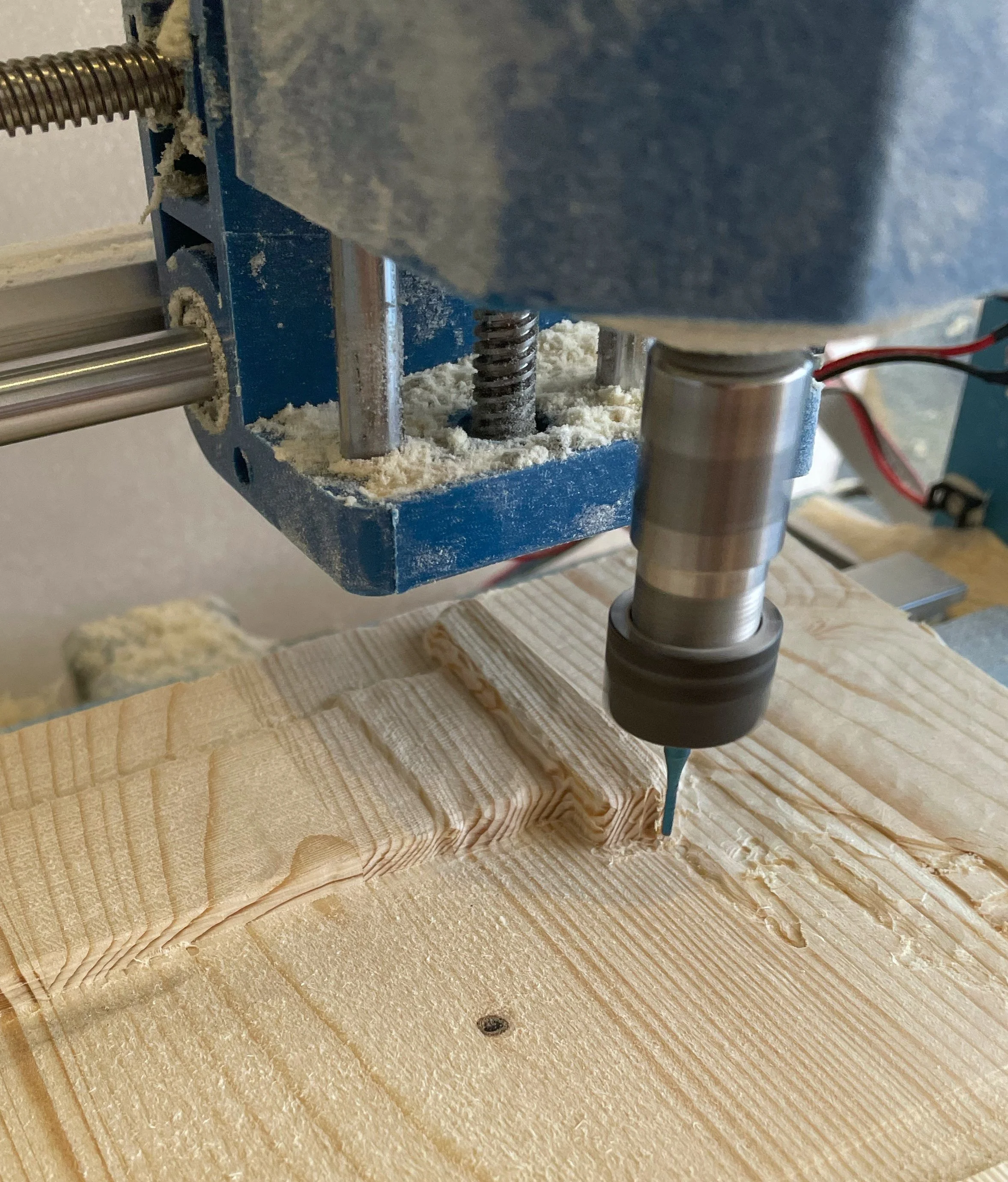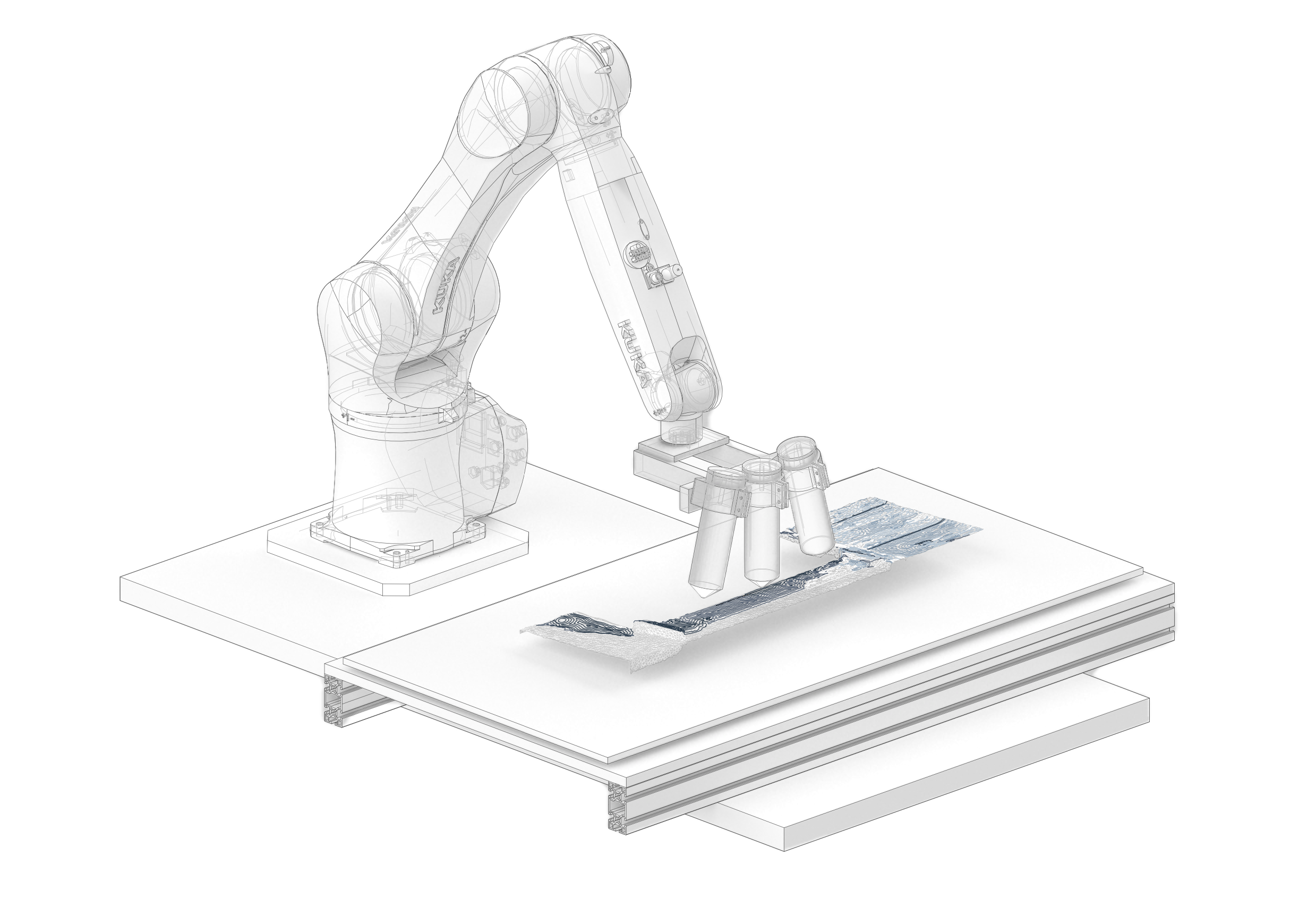About
The project explored the potential to 3D-print nanocellulose surfaces to restore wooden architectural elements. The chosen element for the investigation consisted of two pilasters and a wooden panel from Götiska Tornet in Stockholm, which were initially photogrammically scanned to generate a 3D digital model. The STL file generated from the photogrammetry model was then CNC-milled in wood to generate a physical model to print upon.
The toolpath for the robotic 3D-printing was developed by color tracing a photograph of the element in Illustrator to generate outlines for the pre-existing color variations in the wooden surface. The outlines were then offset as vector lines with a distance of 2 mm to generate a printable toolpath.
The printed surface adhered well to the wood but started to shrink throughout the drying period, resulting in that the distance between the printed toolpath increased and thereby generated a different pattern than the original design. For further research the addition of alginate to the hydrogel could prevent all the water from evaporating through a process called ionic cross-linking, achieved by treating the printed surface with a calcium chloride solution post-printing.





